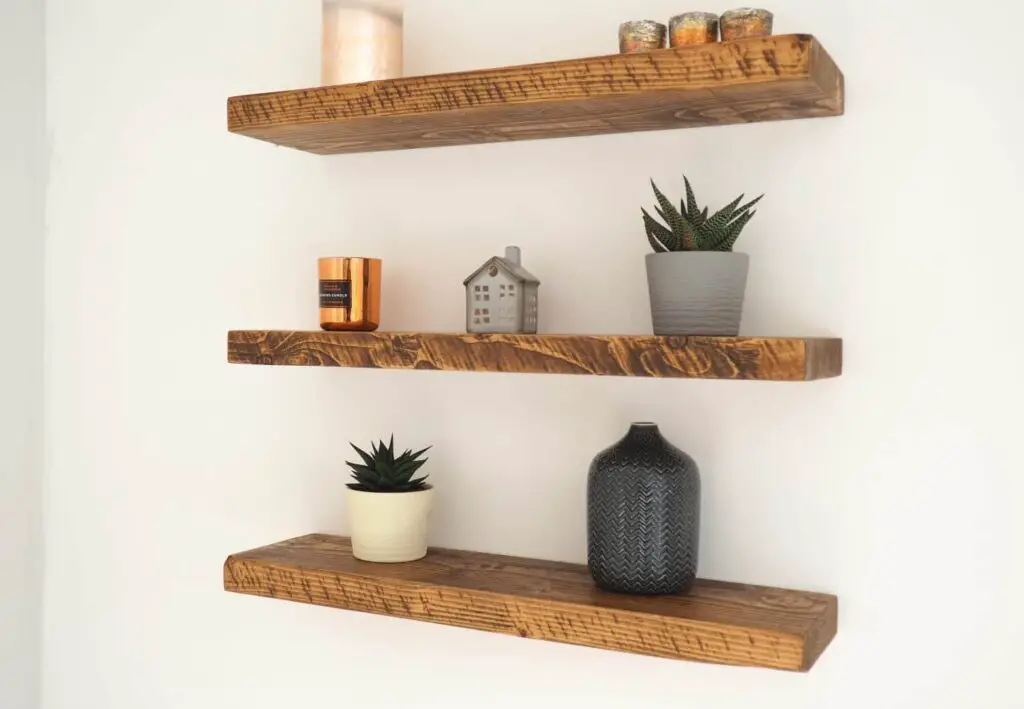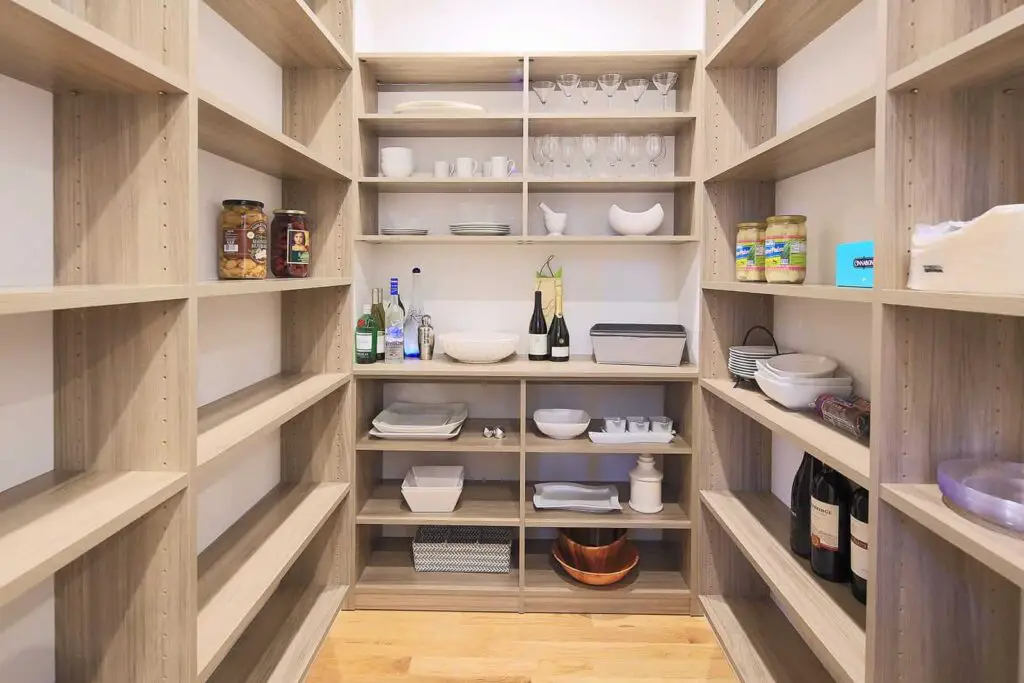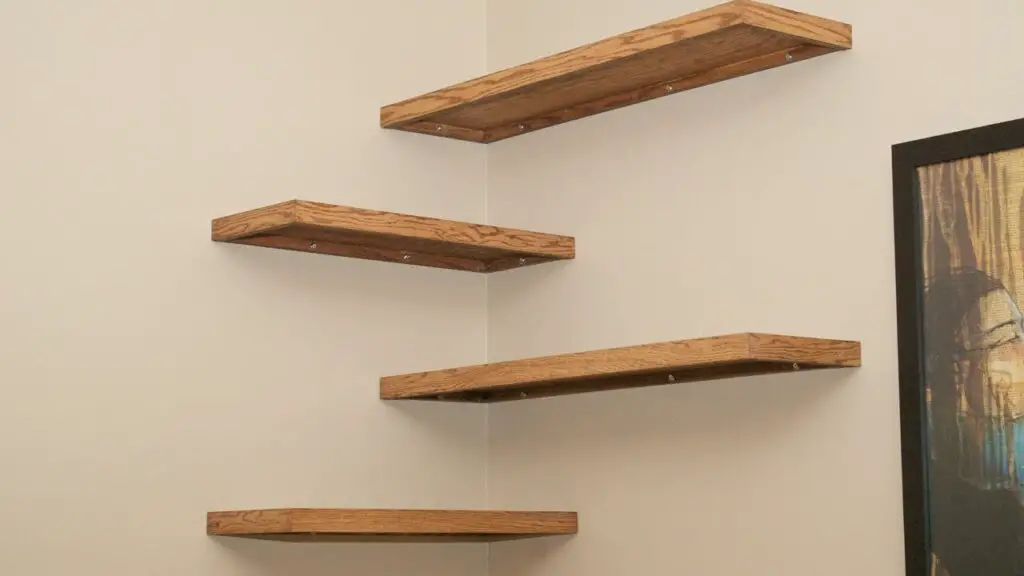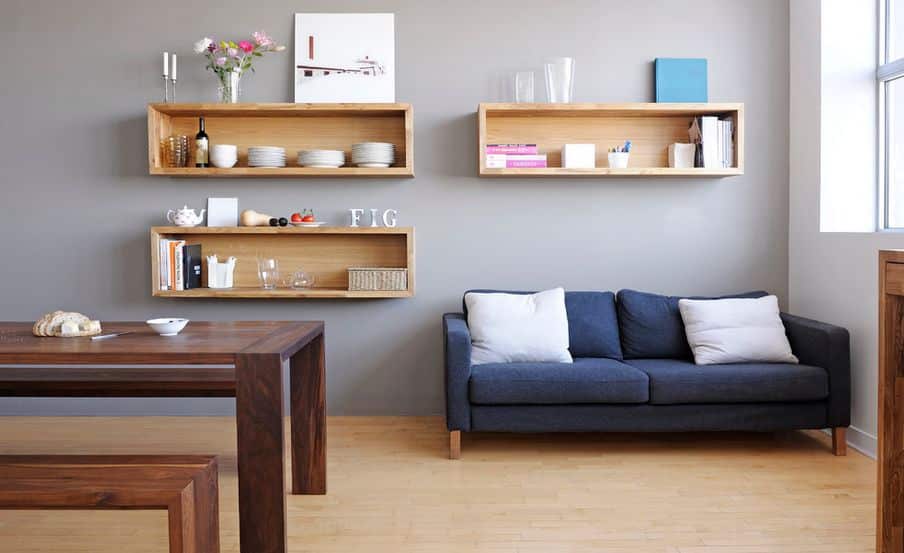How To Build Wood Shelves For Storage
Introduction
How To Build Wood Shelves For Storage: Before you start, take some time to plan and design your shelves. Consider the space where you’ll install them, the dimensions you want, and the items you’ll be storing. Decide on the type of wood and the overall style that matches your decor. Once you have a clear plan, gather all the necessary materials and tools. The main items you’ll need include the wood boards for the shelves, screws or nails, wood glue, a measuring tape, a pencil, a level, a saw (such as a circular saw or a handsaw), a drill/driver, and sandpaper.
Selecting the right type of wood is crucial for both aesthetics and durability. Common choices include pine, oak, plywood, or even reclaimed wood kitchen for a rustic touch. Ensure that the wood is straight and free of defects or warping. Accurate measurements are vital to ensuring your shelves fit snugly and look professional. Measure and mark the dimensions of the shelves on the wood boards, and then use the saw to make precise cuts along the marked lines.
After cutting, use sandpaper to smooth out the edges and surfaces of the wood. This step ensures a clean finish and minimizes the risk of splinters. Now it’s time to put everything together. Use wood glue to attach any support pieces or brackets to the wall, and then attach the shelf boards on top. Alternatively, you can assemble the shelves as freestanding units, depending on your design.

Is it cheaper to build your own storage shelves?
Yes. 9 times out of 10, it’ll be cheaper to build your own shelves than to buy them.
The choice of materials is one of the main things that affects how much it costs to build your own storage shelves. You can choose products that work with your budget and meet your needs. For example, using inexpensive softwoods like pine or standard plywood can cut costs by a lot. Also, reclaimed wood or materials that have been used for something else can be a great and cheap option.
When you build your own storage shelves, you can make them exactly the right size and shape for the space you have. Unlike shelves you buy in a shop, which come in standard sizes, you can make the most of your space by minimizing wasted space and making the most of your storage.
You will need simple tools like a saw, measuring tape, drill, and level to build your own storage shelves. Even though these tools may seem expensive at first, they can be used for many other DIY projects in the future, making them a good investment in the long run.
Most DIY shelves don’t need help from a professional to put together and place. You can find guides and lessons online, or you can ask friends or family who know how to work with wood for help. This saves you money because you won’t have to hire a helper or pay for installation services.
What is the cheapest way to make storage shelves?
For the cheapest shelves, use thin plywood and basic 2×4″ lumber. These shelves will be functional but may sag if the weight of the items you store is too heavy. For heavier items or wider spaces between supports, use thicker plywood. High-quality plywood resists sagging when heavier items are stored on the shelves.
Look around your house or ask friends and family if they have any old or unused items that could be used to make shelves. With very little work, old wooden boxes, pallets, or boards can be turned into rustic and useful shelves. This saves you money because you don’t have to buy new materials. It also gives your shelves a unique look.
Cinder blocks are cheap, and you can find them at most hardware shops. You can make easy, strong storage shelves by stacking them and putting wooden planks on top. This method gets rid of the need for complicated woodwork and makes it easy to change the height of the shelf.
PVC pipes Work
PVC pipes are cheap and easy to work with, so you can use them to make simple, lightweight shelves. By cutting the pipes to the lengths you want and joining them with PVC fittings, you can make a shelf unit that is cheap and easy to change.
Use cardboard boxes as homemade shelves to store things quickly and for very little money. Just stack them in a safe way and use tape or glue to hold them together. Even though it won’t last as long as other choices, this can be a temporary solution for light items or when you need to store something right away.
Old wooden ladders that you find or buy secondhand can be turned into lovely and cheap shelving units. Just put boards or pieces of wood across the ladder’s rungs to make shelves. This method works well in small rooms and gives your decor a touch of old style.
What type of wood is best for shelves?
Cedar is a common wood for making shelves. It is a strong wood that can hold a lot of weight, which makes it great for both homes and businesses. Cedar is another beautiful wood with a rich grain that can make any room look better.
Plywood is a cheap and useful material for shelves. It is made by gluing thin sheets of wood veneers together in layers. This makes it very stable and resistant to warping or breaking. Because plywood has a smooth, even surface, you can paint or finish it to make it look the way you want. Choose plywood with more layers, which is often called “multi-ply” or “multi-layer” plywood, if you want it to be stronger.
Pine is a tree that is known for being cheap and easy to find. It is a popular choice for do-it-yourself jobs because it is easy to work with and takes paint, stain, and sealant well. Pine shelves can get dents and scratches, but they work well for lighter storage needs in indoor areas.
Oak is a hard wood that is known for being strong, durable, and having beautiful grain patterns. It costs more than softwoods like pine, but it stands up to wear and tear better. Oak shelves can hold a lot of weight and are a good choice if you value durability and a classic, timeless look.
Maple is another kind of hard wood that is very strong and hard to break. It looks good on shelves because of its smooth surface and light color, especially in modern and contemporary settings. Even though maple is more expensive than some other woods, its high quality makes it worth the cost.
What is the cheapest material for shelving?
Chipboard. Plain chipboard – unlaminated chipboard is the cheapest and weakest material.
Particle board is an affordable engineered wood product made from wood particles, sawdust, and adhesive. It is widely available and often the least expensive option for shelving. While particle board shelves are not as sturdy as solid wood, they can be suitable for light to medium loads in indoor settings. They are commonly used in closets, cabinets, and temporary storage solutions.
Plywood, mentioned earlier as a wood option, can also be an economical choice for shelving. Its construction from layers of thin wood veneers makes it less expensive than solid wood. Plywood shelves can serve well in various applications, including DIY projects and garage storage, providing decent strength and stability.
MDF is another engineered wood product made from wood fibers and resin. It is slightly more costly than particle board but still considered a budget-friendly material. MDF shelves have a smooth and uniform surface, making them suitable for painting or laminating. They are commonly used for bookshelves, entertainment centers, and display units.
Plastic resin shelving units are lightweight, durable, and one of the most affordable options available. They come in various sizes and configurations, making them versatile for both indoor and outdoor use. Plastic shelving is easy to clean and resistant to moisture, making it suitable for storage in damp environments like basements or garages.

Can you make shelves out of plywood?
Just buy a few planks of plywood in the depth you want your shelves to be, then cut them to your required lengths. 3. With the plywood shelves cut to size, you’ll now need to smooth the edges with sandpaper. Start off with a rough grain sandpaper, then slowly work down to a fine grit.
Plywood is made by layering thin sheets of wood veneers and gluing them together with alternating grain directions. This construction gives plywood exceptional strength and stability, making it less prone to warping or splitting compared to solid wood. As a result, plywood shelves can hold a significant amount of weight and remain sturdy over time.
Plywood is generally more affordable than solid wood, making it a budget-friendly option for shelving projects. Depending on the grade and thickness, plywood can offer good value for its strength and durability, making it an attractive choice for those on a tight budget.
Plywood comes in various thicknesses and grades, allowing you to select the most suitable type for your shelving needs. Thicker plywood is suitable for heavy-duty shelving units, while thinner plywood can be used for lightweight or decorative shelves. Additionally, plywood is available in different finishes, including smooth sanded or rougher textures, depending on your desired look.
Plywood is easy to work with, making it an excellent material for DIY enthusiasts. It can be easily cut to size with basic woodworking tools like a circular saw or a handsaw. The layers of wood also allow plywood to hold screws securely, facilitating easy assembly of shelving units.
What is the strongest material for shelves?
No-Sag Spans
Birch, maple, and oak are the stiffest, followed by ash, cherry, and walnut. You can increase the stiffness of a shelf by sinking screws into it through the solid back of the case. Or, as shown below, add more strength and maintain adjustability by attaching a cleat or molding to the front of the shelf.
Solid wood, especially hardwoods like oak, maple, and mahogany, is known for its exceptional strength and longevity. Hardwood shelves can handle substantial weight without bending or sagging, making them ideal for heavy-duty storage. Their natural beauty and timeless appeal also make them a popular choice for both practical and decorative shelving.
Metal shelves, made from materials like steel or aluminum, are incredibly strong and can withstand heavy loads. Steel shelves, in particular, are known for their robustness and are often used in commercial and industrial settings. Metal shelves are resistant to moisture and can handle demanding storage requirements.
While plywood on its own is relatively strong, you can increase its load-bearing capacity by adding reinforcements like brackets, supports, or metal strips. This combination provides excellent strength while still benefiting from the cost-effectiveness and versatility of plywood.
Certain engineered wood products, such as laminated strand lumber (LSL) and laminated veneer lumber (LVL), offer exceptional strength and stability. These materials are made by bonding layers of wood veneers or strands together with adhesives, creating products with consistent strength and fewer imperfections than natural wood.
What can I use instead of wood for shelves?
7 Smart Alternatives to Wood
- 1- Melamine. At Diplomat Closet Design, melamine is our #1 choice as a wood alternative.
- 2- Engineered Wood.
- 3- Modern Plywood, OSB, and MDF.
- 4- Bamboo.
- 5- Cork.
- 6- Textured/Colored Concrete.
- 7- Wood-Effect Tiles.
- Fast Lead Times and Lower Prices.
Tempered glass shelves provide a sleek and elegant look, making them a stylish option for modern spaces or displaying decorative items. While they may not be as suitable for heavy loads as wood or metal, glass shelves are perfect for showcasing collectibles, trophies, or delicate belongings. They offer a light and airy aesthetic, allowing light to pass through, making the space feel more open and spacious.
Plastic resin shelves are lightweight, affordable, and resistant to moisture and rust. These shelves are easy to clean, making them a practical choice for storage in damp environments such as garages, basements, or outdoor sheds. They are commonly used in utility rooms, workshops, and as temporary storage solutions.
Wire shelves, made from metal, are an excellent alternative to traditional solid shelves. They provide good ventilation, making them suitable for storing items that require airflow, such as clothing or linens. Wire shelving is lightweight, easy to install, and adjustable, allowing you to customize the shelf height according to your needs.
For heavy-duty and industrial applications, concrete or masonry shelves can be considered. These materials are incredibly strong and durable, but they are less common for indoor shelving due to their weight and immovability. They are typically used for outdoor storage or in specialized industrial settings.
Is plywood strong for shelves?
First and foremost, the wood you use for making bookshelves will impact the design as well as the cost of your project. ¾-inch plywood is considered the industry standard, thanks to it being strong yet inexpensive—especially when compared with some solid woods.
Compared to solid wood, plywood is less likely to warp or deform over time, especially when properly supported. The cross-grain arrangement of the veneers counteracts the natural tendencies of wood to expand and contract with changes in humidity and temperature, resulting in more stable shelves.
Plywood shelves have excellent load-bearing capacity, allowing them to hold a significant amount of weight without sagging or bending. The strength of plywood shelves can be further enhanced by choosing thicker plywood or reinforcing the shelving unit with additional supports or brackets.
Plywood is available in various thicknesses, allowing you to choose the appropriate size for your specific shelving needs. Thicker plywood is suitable for heavy-duty applications, while thinner plywood can be used for lighter loads or decorative shelves.
Plywood is easy to cut and shape, making it a versatile material for DIY shelving projects. You can easily customize plywood shelves to fit your available space and storage requirements. With basic woodworking tools, you can create shelves of various sizes and configurations to maximize your storage space.
Plywood is generally more affordable than solid wood, making it an attractive option for those on a budget. Its cost-effectiveness, combined with its strength and versatility, makes plywood a practical choice for both large-scale shelving projects and smaller DIY endeavors.

Conclusion
By carefully planning and selecting the right materials, you’ve laid the foundation for sturdy and functional shelves basement. Measuring accurately and cutting precisely ensures a seamless fit and professional look, while sanding smooths out rough edges, guaranteeing both safety and aesthetics. Assembling the shelves with care and securing them firmly ensures their stability and durability over time. Adding a wood finish or stain not only protects the wood but also adds a touch of elegance to your creations.
Remember, woodworking is a skill that grows with experience. Don’t hesitate to start with simpler projects if you’re a beginner, and as your confidence and expertise grow, you can take on more intricate designs. Building wood shelves for storage offers a fantastic opportunity to unleash your creativity and ingenuity. Whether you’re organizing a cluttered room, displaying cherished possessions, or maximizing space in your garage, your handmade shelves will undoubtedly be a source of pride and admiration.
Now it’s time to put everything together. Use wood glue to attach any support pieces or brackets to the wall, and then attach the shelf boards on top. Alternatively, you can assemble the shelves as freestanding units, depending on your design. For added stability, reinforce the shelves by driving screws or nails through the support pieces into the back of the shelves. Make sure everything is level and securely attached.



